Photostory by Giovanna Chavez
Reverting deforestation and land degradation and improving farmers livelihoods in Makueni County, Kenya
During my studies in Germany in BA Geography and MSc Integrated Natural Resource Management at the Humboldt University of Berlin, I had the opportunity to complement my academic training through field work on all continents. Back in spring of 2018, I embarked on an exciting expedition to East Africa in search of inspiring land restoration projects.
The pictures were taken in Drylands Natural Resources Centre (DNRC) located in Makueni County, Kenya. Makueni is a rural district not far from the capital, which still lacks basic infrastructure. Its population relies on few economic activities outside of subsistence farming for securing their livelihoods. Makueni has felt effects of climate change, manifesting in extreme droughts and floods, thereby having an impact on agricultural productivity. As crop yields fall, farmers are then forced to further exploit any remaining forest. Indeed, people in Makueni have deforested much of their natural woodlands in regards of the need for fuel and income. As forests are cut down, which acted as natural soil and riverbank stabilizers, the soils erode, rivers dry up, and less water and fewer nutrients are retained in the soil. The DNRC started back in 2010 in Mbumbuni, a small rural town in Makueni, as a community-based environmental NGO working to revert the effects of deforestation and land degradation and improve farmers livelihoods in semi-arid regions. Led by Nicholas SyanoDNRC has set its mission to be the co-development and diffusion of sustainable agriculture and agro-forestry solutions in semi-arid regions.
The DNRC enables a community-led capacity building program focused on enabling farmers plant their own fruit trees for promoting food security by fostering practical skills of local villagers in agroforestry and permaculture (DNRC 2018). In this manner, the DNRC has trained over 9,000 local people and reinforced local capacities in conservation and dry-land resource management. Encouraged by the DNRC, small holder farmers have restored their plots and woodlots, thereby helping to upgrade and improve over 650 acres of degraded land (back in 2018). The DNRC provides farmers in the community with seedlings and nursery services sold at a symbolic cost of 3 Kenyan Shillings. This small price that farmers pay for obtaining trees ready to be planted in their farms serves for engaging farmers in the reforestation process by letting them see this as an investment in their properties rather than a topbottom subsidy. In the last five years, over 35,000 subtropical evergreen forest dryland trees and fruit trees of 170 different indigenous species have been planted by the 700 affiliated families (PRI Kenya 2017). The average survival rate has been between 80-90% (DNRC 2018). Under this model, the DNRC launched pilot project with PRI Kenya “Community Mobilization for Regenerative Agriculture (C-MRA)”, promoted by the umbrella organisation PRI Kenya and promoted across various regions in the country (Hockin-Grant and Yasué 2017).
Furthermore, the DNRC encourages the diversification of economic activities, both on and off farm, as a means of building more resilient systems (Wilson and Lovell 2016). One of the activities strongly promoted by the DNRC is sustainable charcoal production, or green charcoal. This technology consists of setting up simple and inexpensive ovens that control oxygen levels through holes; recycle methane up to three times; use less wood by extending the combustion process, thus enabling the production of charcoal with small branches retrieved through selective branch cutting (rather than taking down trees). Farmers are able to use the ovens, drums, at the DNRC for free and can sell the finished product at the capital with support of DNRC or keep it for private use. Charcoal also benefits from having a long storage life and little economic losses if not sold. Overall, these practices offer prospects for improving the sustainability of wood fuel harvesting in Sub-Saharan Africa, where wood fuels account for 80% of energy supply and 75% of its production is said to be unsustainable (Mutimba and Barasa 2015).
In my pictures, I depict relevant elements of the community-based restoration efforts, namely women, who are the primary actors in the restauration of these landscapes, as well as the collectors of water and firewood; the wood ovens used for carbonizing small branches by recycling methane up to three times; chickens in the barn; the landscapes, outside (picture 10) and within the restored area (pictures 1 & 9)
Sources
Chavez, G (2018): Field Notes during internship at Dryland Natural Resource Center in Malueni Kenya (April 2018)
Bukowski, C., and Munsell, J. (2018): Community Food Forests on the Rise. In The Community Food Forest Handbook. Retrieved from: https://www.chelseagreen.com/product/the-community-food-foresthandbook/ [Accessed 23. July 2018]
DNRC (2018). Nursery. Retrieved from http://www.dnrckenya.co.ke/nursery.php
Hockin-Grant, K. and Yasué, M. (2017) The effectiveness of a permaculture education project in Butula, Kenya. International Journal of Agricultural Sustainability, 15(4): 432-444, DOI:10.1080/14735903.2017.1335570.
Mutimba, S., and Barasa, M. (2005). National charcoal survey: Summary report. Exploring the potential for a sustainable charcoal industry in Kenya. Nairobi: Energy for Sustainable Development Africa (ESDA).
Wilson, M. H., & Lovell, S. T. (2016). Agroforestry—The next step in sustainable and resilient agriculture. Sustainability, 8(6): 574.

A farmer going through the community food forest on her way to collect wood. In Makueni county, wood is the main energy source, reason for which the most woodlands have been deforested. Fuel wood collection is mainly carried out by women.
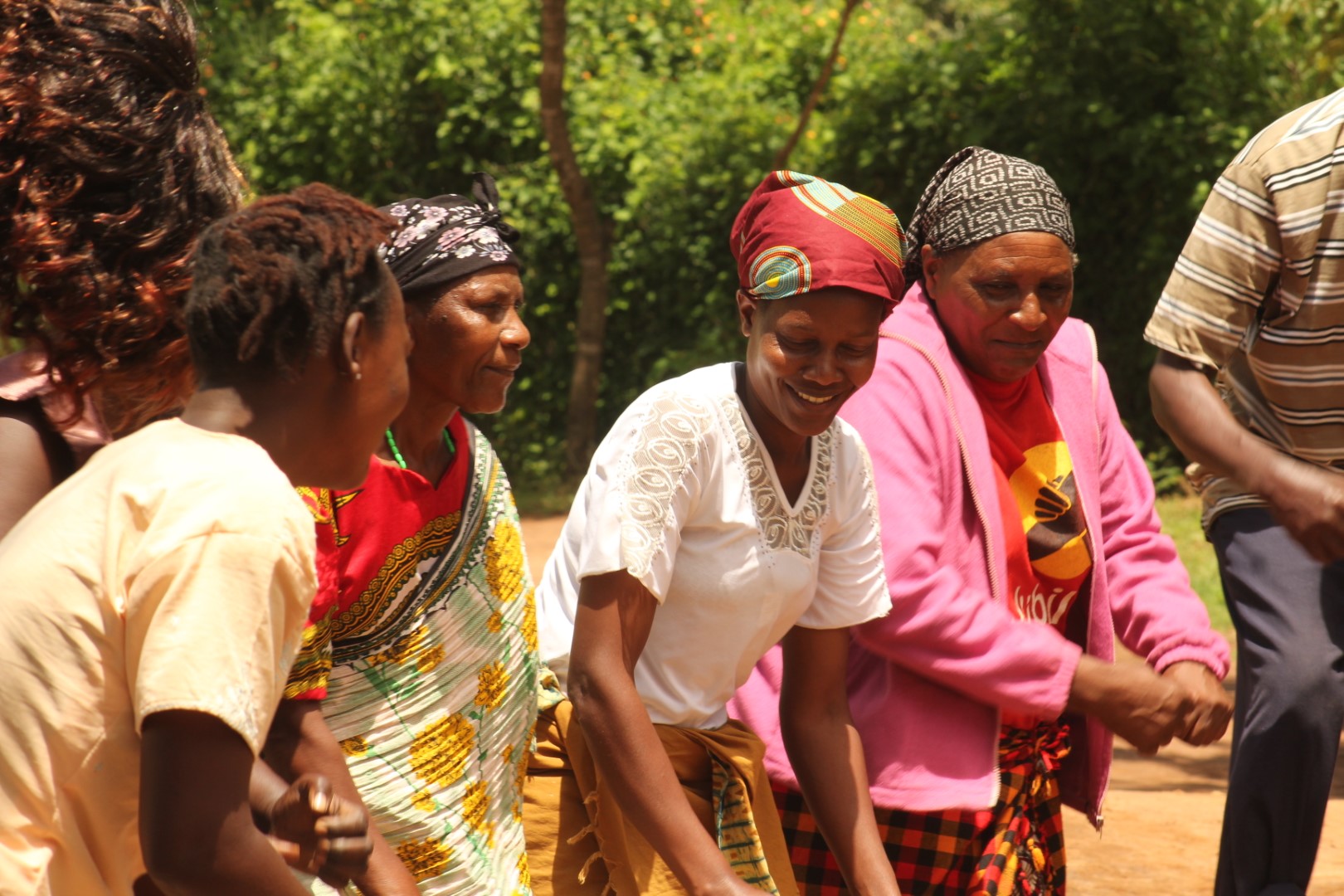
Farmers gather at DNRC for a community-led training on agroforestry. Women give community members a warmhearted welcome into the weekend’s workshop on agroforestry. DNRC has established a capacity building program that propagates permaculture practices for promoting food security by enabling farmers of Mbumbuni plant their own fruit trees.
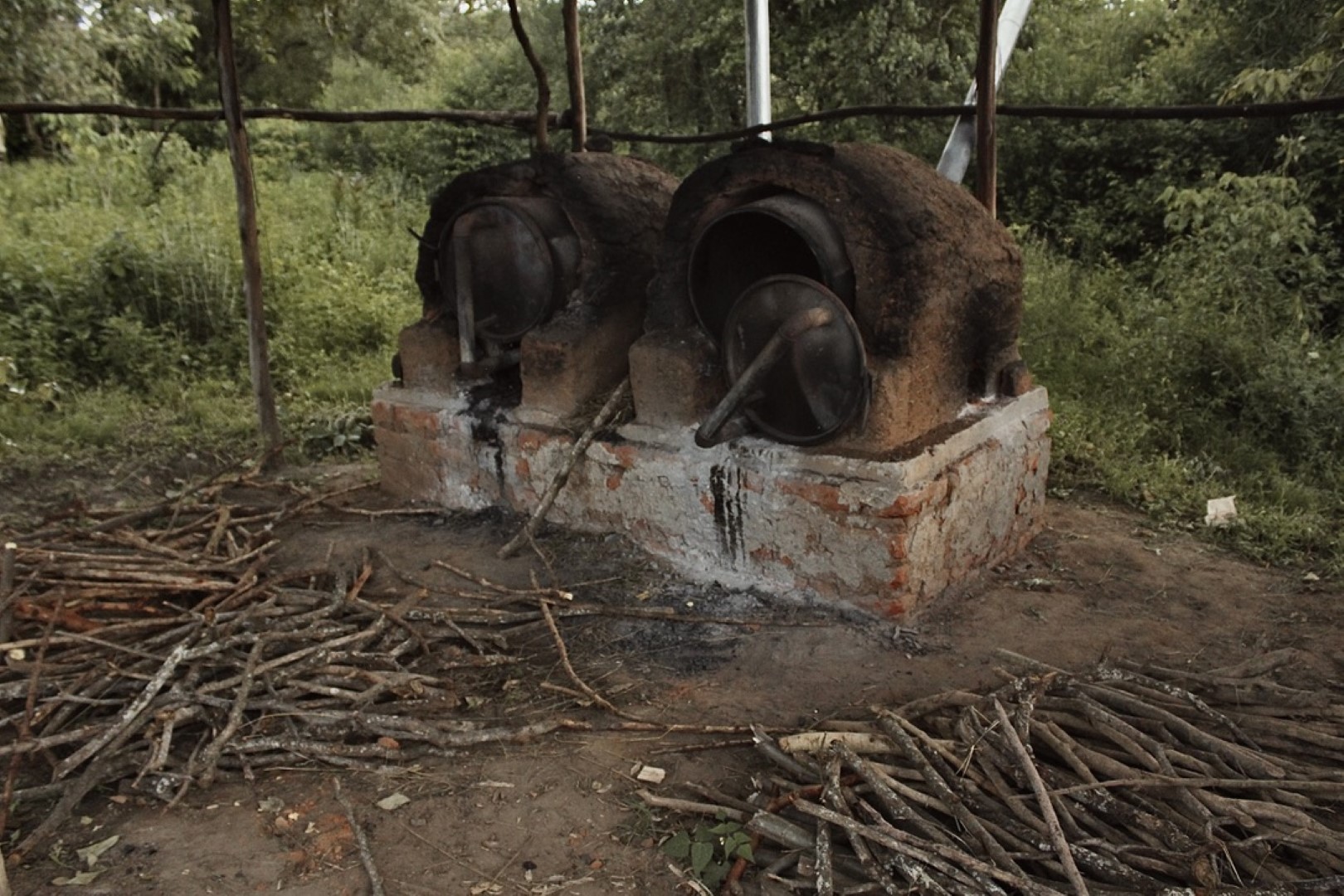
Community ovens at DNRC for carbonizing tree branches. DNRC has introduced sustainable charcoal production, a.k.a green charcoal, as an innovative off-farm activity. This technology consists of setting up inexpensive ovens that control oxygen levels through small holes. The ovens are very effective as they recycle methane up to three times, use less wood by extending the combustion process, thus enabling the production of charcoal with small branches retrieved through selective branch cutting.
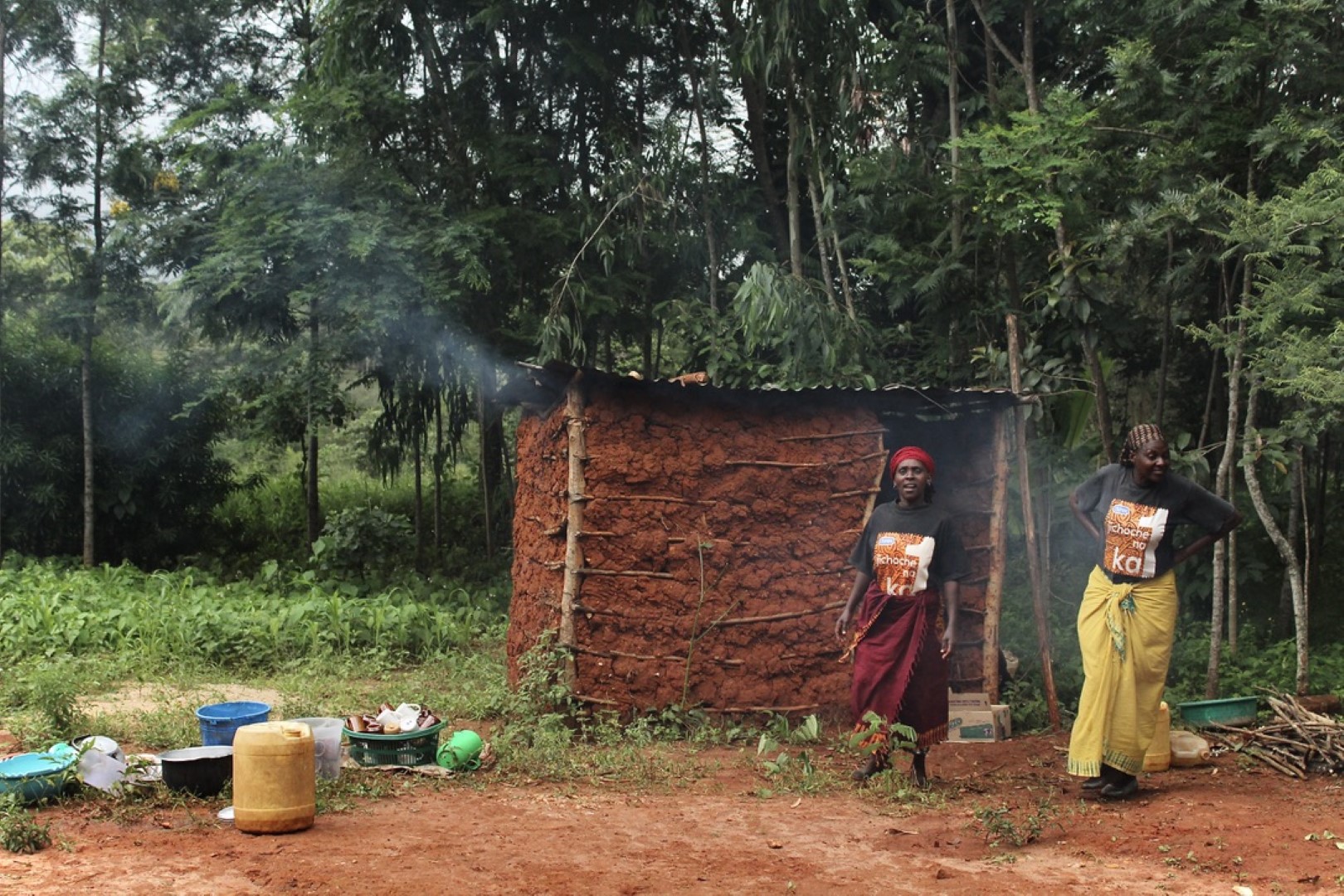
Community members efficiently utilizing firewood from tree branches in their households. The neighborhood has benefited greatly from the efforts of the DNRC as they are able to ensure a sustainable source of energy to meet their household needs. Farmers take the branches they gathered on their plots to the community ovens at DNRC and get to decide whether they want to sell it at markets in Nairobi or they keep it for using it at home.
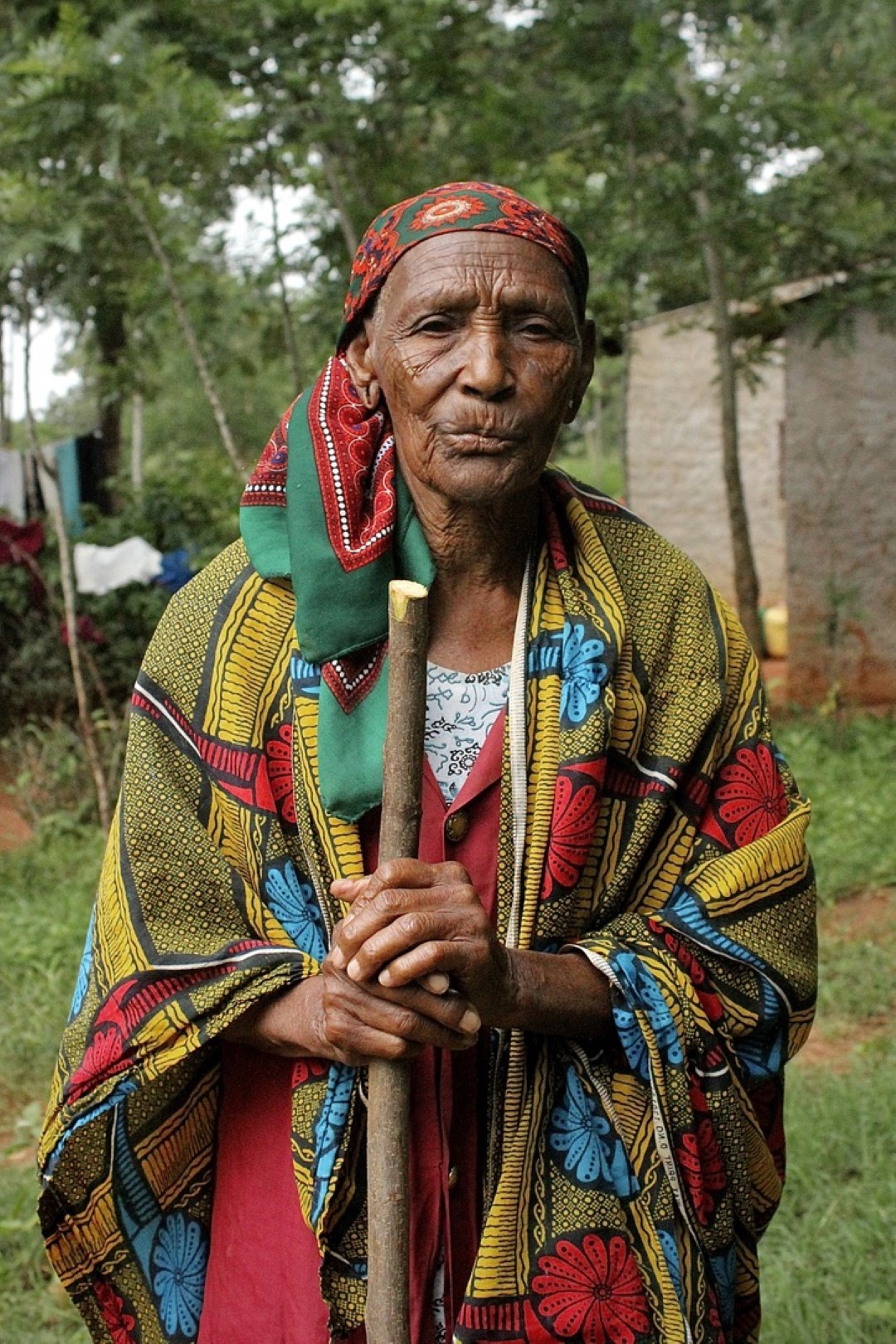
Elder of the community. This powerful woman seemed to have earned the respect of the entire village. As I encountered her, she was the one receiving me at the farm’s entrance, and then took my hand and led me to meet the rest of the community members.

Family resting after work. After working hard on their farms, the ladies and children relax outside their household while waiting for dinner.

Women preparing corn. These charming farmers could not stop giggling while chanting and cutting the corn cobs. The energy generated within the community was harmonious and joyful.
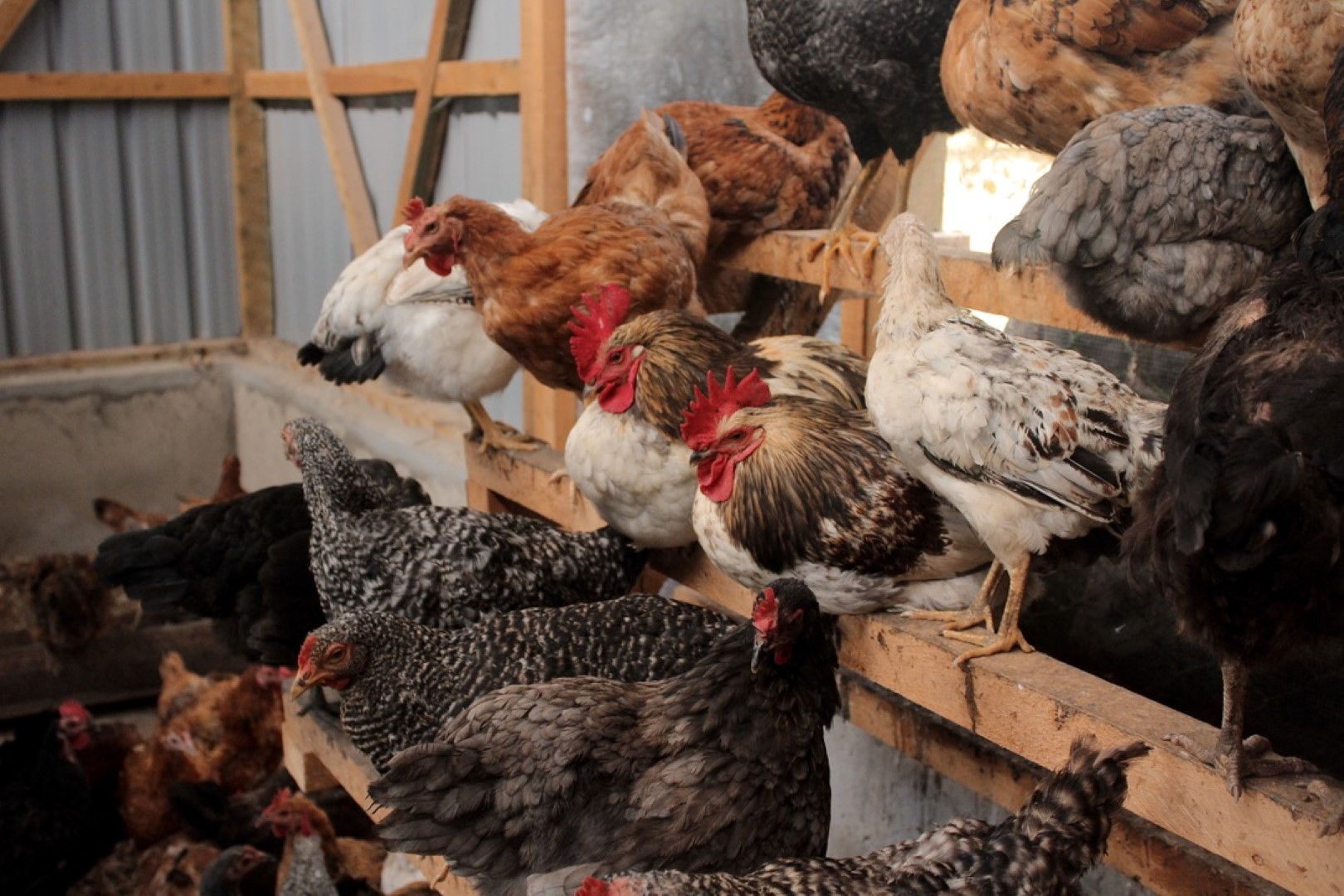
Chickens in barn before heading into "chicken tractor". The DNRC has focused on propagating permaculture practices, such as the so-called “chicken tractor”, in which chickens are placed on raised beds across the farm for preparing the soil while nibbling on the organic food waste.
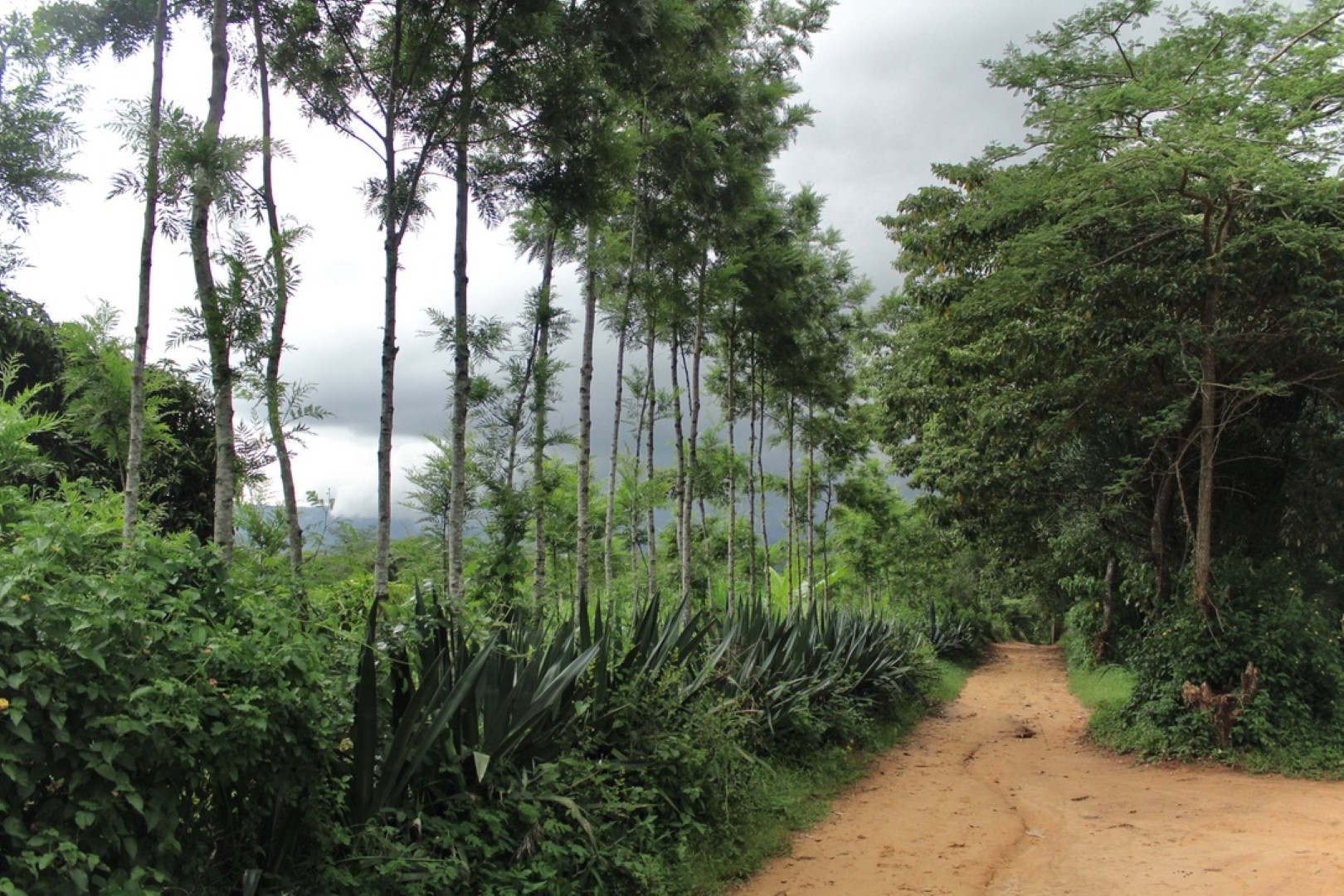
Restored neighborhood. Over 500 acres have been restored by the community and turned from a degraded state into a lush food forest. DNRC has trained over 9,000 local people and reinforced local capacities in conservation and dry-land resource management. In this manner, in the last five years, over 35,000 subtropical evergreen forest dryland trees and fruit trees of 170 different indigenous species have been planted by the 700 affiliated families.

Frequent floodings in the surroundings are a result from widespread deforestation. Extreme weather events, both droughts and floods, are increasing year by year because of poor land management practices. However, as one enters the small prosperous community of Mbumbuni, which seems to have mitigated effects of soil degradation and erosion effectively, it’s easy to forget how the reality outside looks like.
